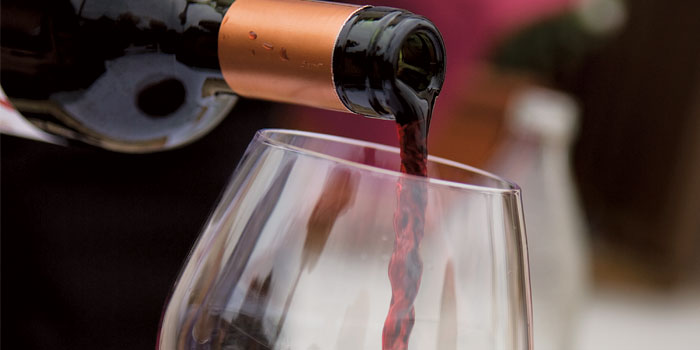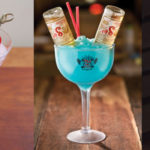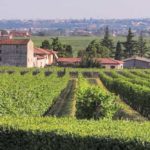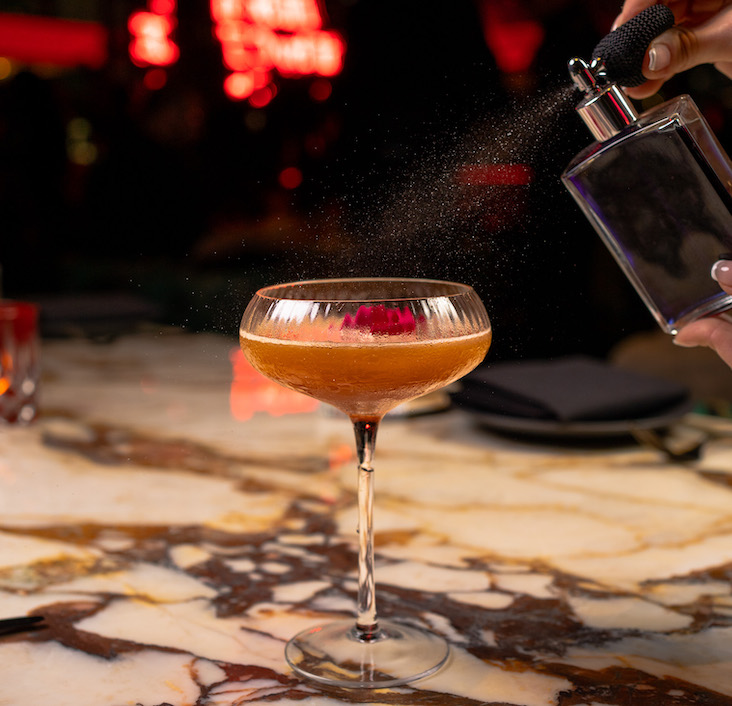Sommeliers give their picks for American red wines beyond cab and merlot
American cabernet sauvignon and merlot still take up a fair amount of real estate on the average wine list. But there are plenty of domestic reds that deserve more attention.
For instance, Benjamin Rogers, dining room manager for The Promontory restaurant in Chicago, views zinfandel, a truly native varietal, as “an oft-maligned grape I’m happy to advocate for.” Though zinfandel can be seen as highly spirited and over-the-top in its intensity, Rogers has a few picks that show guests the range that well-made bottles can display.
One is the 2012 Hi-Rollr Red from Mendocino’s Yorkville Cellars, which he prices at $39 a bottle and describes as “playful and approachable.” Another choice is the 2010 Alex Cooper project from Doug Rafanelli Vineyard in Dry Creek Valley ($75 a bottle), which Rogers says is more masculine with leather notes.
Pleasing pinot
Thought pinot noir has become more popular, it’s still often viewed as an alternative to the more conventional cab and merlot. Nicole Bernard, assistant restaurant manager of the Vinifera restaurant at the Westin Hotel in Reston, VA, can check off several reasons why it should be front and center.

Nicole Bernard, assistant restaurant manager of Vinifera at the Westin Holen in Reston, VA, believes the divserse and food-friendly pinot noir can “please nearly any palate.”
“Other than the diversity of the wine and its ability to pair extremely well with myriad dishes, the wine can please nearly any palate,” Bernard says. American pinot styles can vary wildly, though, from the restrained, earthy, Burgundian variety, to those that are more intense, fruity, tannic and fuller bodied.
The 2012 Sineann Resonance Vineyard pinot noir from Yamhill-Carlton in Oregon’s Willamette Valley ($108 a bottle) veers toward the latter style, Bernard notes. The wine’s dark, rich, complex and palate-coating notes pair well with seared venison, warm lentil sauté or slow-seared duck breast and paella.
Andy Wedge, manager/sommelier at Husk in Nashville, touts a pinot noir from New York’s Finger Lakes, the 2013 Forge Cellars “Les Allies” pinot noir. The 108-seat restaurant prices the wine at $70 a bottle.
“A very light, amazingly unique pinot noir that is both fresh and funky at the same time,” he notes. “Tart red raspberry, cherry and cranberry are balanced by forest floor earth and mushroom,” a perfect match for pit-roasted chicken with zucchini and cream sauce.
Syrah shows strength
After cabernet sauvignon, pinot noir is by far the most popular red American varietal on the 2,700-bottle wine list at Commander’s Palace in New Orleans. But syrah is gaining ground—in part due to the legions of servers and sommeliers who champion it.

David Keck, sommelier at Camerata at Paulie’s, says that the Houston, TX restaurant has been pairing foods with a lot of cabs and merlots, “but we still sell more syrah than anything else.”
Commander’s Palace offers the 2012 Stolpman Vineyards Ballard Canyon syrah from Santa Barbara for $16.50 for a full glass and $8.25 for a half glass. By-the-glass programs are a great way for guests to ease into unfamiliar territory, says the classic restaurant’s “wine guy” Dan Davis. “Allowing guests to order half-glass portions encourages them to be adventurous without too much commitment.”
Husk also offers a syrah from Stolpman Vineyards, the 2013 Original, which it sells by the bottle for $88. “When it comes to syrah, I tell guests that in addition to big fruity flavors, there is usually a more pronounced black pepper note, perhaps making it a touch more food-friendly,” notes Wedge.
David Keck, sommelier at Camerata at Paulie’s in Houston, TX, and cofounder of the Houston Sommelier Association, is another fan of Stolpman’s syrah. “We’ve been pairing foods with a lot of cabs and merlots, but we still sell more syrah than anything else.”
Bernard cites the 2010 Mira Winery syrah from Hyde Vineyard in Napa Valley ($80 a bottle) as a deep, intense standout on Vinifera’s 420-bottle list. Its notes of espresso, charcoal and violets are followed by salted caramel, licorice and white pepper. Bernard pairs the syrah with flavorful dishes that can hold their own next to the glass, including pork osso bucco, rack of lamb, duck breast and steak.
Rhône blends pick up steam
California’s Rhône blends with grapes like syrah, as well as grenache and mourvèdre, have been popular at Vinifera. The 2012 Lioco “Indica” carignan/mourvèdre blend from Mendocino County ($50 a bottle), for instance, has notes of kirsch, dark chocolate and bright raspberry that make it a winner with light grilled meats, salumi and pastas with tomato sauce, Bernard says.
Davis cites the 2012 Tablas Creek Vineyard “Côtes de Tablas” Rhône blend from Paso Robles ($64 a bottle) as one of the original success stories from the region’s “Rhône Rangers.”
That’s fitting, as it’s made with grapes grown on vine cuttings from legendary winery Château de Beaucastel in Châteauneuf du Pape in the Rhône Valley. “This wine leads with cherry and plum on the palate and aromas of spice box and dark cherries,” Davis says. “It is great with heavier meats, cassoulet and rustic game and fowl.”
But there are differences in aromas, flavors and overall style between red Rhône wines and their California counterparts. Servers should do a little sleuthing to see just what the guest is craving.
For example, Bernard says, “Are they looking for a syrah that is more fruit-forward with dark fruits (as in California) or are they looking for a wine that is less fruit-forward and has more spice (as in the Rhône Valley)?”
A bottle that splits the difference is the 2011 Cass Estate Grenache from Paso Robles ($58 a bottle), which is delicate and medium-bodied, with flavors of bright strawberry as well as pink peppercorns and baking spices all joined by moderate tannins. She recommends it with anything from charred octopus and seared rare ahi tuna to venison and charcuterie.
A French varietal from Burgundy, the 2013 Rancho Real Vineyard gamay noir from Field Recordings, is one of Rogers’ favorites right now. “It’s partially carbonically macerated, which brings out the varietal’s bold fruit, but unlike a typical Beaujolais, it has an elegant, mineral finish.” Rogers pairs it with Faroe Island salmon; it mingles nicely with the dish’s accompanying tart yuzu and rich miso.
Valdiguié, a French varietal originally from the Languedoc-Roussillon region, produces dark-colored wines that are light to medium body. Husk has offered the 2013 Broc Cellars Valdiguié from Solano County, CA, for $12 a glass.
Davis calls the 2013 J. Lohr “Wildflower,” a valdiguié-based wine from Arroyo Seco in Monterey, CA, ($26 a bottle) both a steal and an over-performer. “Bursting with vibrant cherry, raspberry and pomegranate, this wine is perfect with meat components, charcuterie and chicken or fish dishes with dark sauces,” he says.
Old World meets new world

Chicago’s The Promotory lists wines by region and producer first, and then by varietal, to convey the importance of terroir and its vilification over strictly varietal.
As for other European varietals grown in the U.S., Wedge says the 2012 cabernet franc reserve from Barboursville Vineyards in Virginia ($69 a bottle) straddles the gap between Old World elegance and restraint and New World fruit. “It will never be confused for Right Bank Bordeaux or Napa Valley cabernet franc,” he notes, “but it does combine all of these signatures in amounts that will please almost any drinker.”
American wines made from Italian varietals are slowly taking root, Bernard says, with wineries like the aforementioned Barboursville Vineyards making vermentino, nebbiolo and barbera.
Rogers has been known to pour the versatile 2012 sangiovese from Caparone Winery in Paso Robles ($10 a glass). “It’s very light, nicely acidic and terroir-driven,” he says. “It won’t overpower a light salad, but it can easily carry through to a main course of a gamey lamb burger with olive and feta.”
Wedge agrees that Italian varietals are starting to make more noise, and has carried Giornata Sangiovese and Clendenen Nebbiolo in the past. “They are extremely high quality and delicious wines.”
Keck at Camerata is excited about what the domestic wine producers are making. “They’re being adventurous and taking risks with what they’re planting,” and highlighting new and interesting varietals, he says.
Encouraging guests to try
Staff education and buy-in are key in nudging guests to try wines they normally wouldn’t order, says Davis. “Train your staff and let them taste the wines on a regular basis,” he advises. To move guests out of their comfort zones, “you must have confidence and enthusiasm about the wines.”
Servers typically spend the most time with guests, building rapport and fostering regulars, Bernard says, so training them should be a major focus. “We have regular wine tastings with our service staff as well as mandatory wine classes taught by our sommelier, so they are comfortable recommending wines outside of the ‘varietal norm.’”
Vinifera also discounts wines on Sundays; those costing $99 and under are half price, while those priced $100 and up receive a 20% discount. The restaurant’s wine-of-the-month program highlights a white and a red varietal at a deeply discounted rate to encourage exploration into lesser-known varietals.
The Promontory lists wines by region and producer first, and then by varietal, hoping to convey the importance of terroir and vinification over strictly varietal. Rogers opens bottles and has staff talk about pairings every day—their excitement gets translated in turn to the guests. “We talk a lot about how to ask the right questions of diners to find out what they really want in a wine.”—Additional reporting by Kyle Swartz.
Kelly Magyarics, DWS, is a wine, spirits and lifestyle writer and wine educator in the Washington, D.C. area. She can be reached through her website, www.kellymagyarics.com, or on Twitter and Instagram @kmagyarics.







